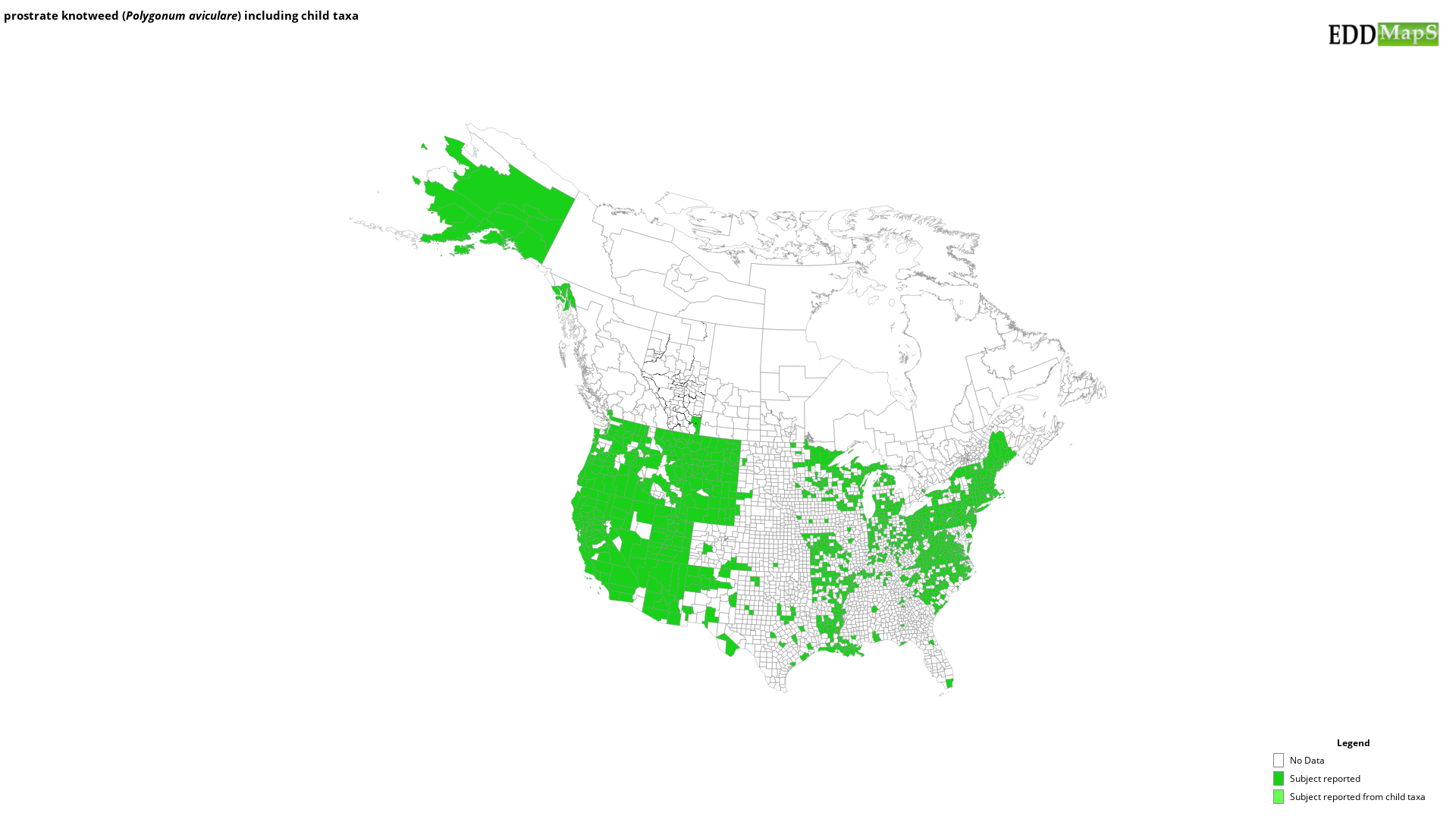prostrate knotweed
(Polygonum aviculare)
This species is Introduced in the United States
Origin
Native to Eurasia and North America.
Appearance
Polygonum aviculare is a mostly prostrate summer annual, with hairless stems up to 36″ (91 cm) long.
Foliage
The alternate oblong leaves are about 1″ by 0.33″ and smooth with entire margins. The leaves often have a blue-green appearance.
Flowers
Flowers have five petals (sepals) that can range from white to pink to purple, but with white margins. Small clusters of flowers arise from the leaf axils.
Fruit
The fruit is a three-sided achene (one seed) that is reddish-brown to brown.
Ecological Threat
P. aviculare forms think mats which outcompete many other plants. It inhabits disturbed areas such as roadsides, compacted soil along paths, and waste areas with barren ground. P. aviculare is more tolerant of road salt and pollution than most species.
https://www.fs.fed.us/database/feis/plants/forb/polavi/all.html
https://www.illinoiswildflowers.info/weeds/plants/pros_knotweed.htm
Native to Eurasia and North America.
Appearance
Polygonum aviculare is a mostly prostrate summer annual, with hairless stems up to 36″ (91 cm) long.
Foliage
The alternate oblong leaves are about 1″ by 0.33″ and smooth with entire margins. The leaves often have a blue-green appearance.
Flowers
Flowers have five petals (sepals) that can range from white to pink to purple, but with white margins. Small clusters of flowers arise from the leaf axils.
Fruit
The fruit is a three-sided achene (one seed) that is reddish-brown to brown.
Ecological Threat
P. aviculare forms think mats which outcompete many other plants. It inhabits disturbed areas such as roadsides, compacted soil along paths, and waste areas with barren ground. P. aviculare is more tolerant of road salt and pollution than most species.
https://www.fs.fed.us/database/feis/plants/forb/polavi/all.html
https://www.illinoiswildflowers.info/weeds/plants/pros_knotweed.htm
Selected Images
Maps
EDDMapS Distribution - This map is incomplete and is based only on current site and county level reports made by experts, herbaria, and literature. For more information, visit www.eddmaps.org
State Lists - This map identifies those states that have this species on their invasive species list or law.
Invasive Listing Sources
Taxonomic Rank
| Domain: Eukarya |
| Kingdom: Plantae |
| Phylum: Magnoliophyta |
| Class: Magnoliopsida |
| Superorder: Caryophyllanae |
| Order: Caryophyllales |
| Family: Polygonaceae |
| Genus: Polygonum |
| Polygonum aviculare |
Other System Links
Plants: POAV
Bayer: POLAV
GRIN: 29238
ITIS: 20876
NPDN Pest: PEAAGBD
NPDN Host: 36029
References
Common Name Reference: USDA, NRCS. 2010. The PLANTS Database. National Plant Data Center, Baton Rouge, LA, USA.
Scientific Name Reference: USDA, NRCS. 2010. The PLANTS Database. National Plant Data Center, Baton Rouge, LA, USA.


